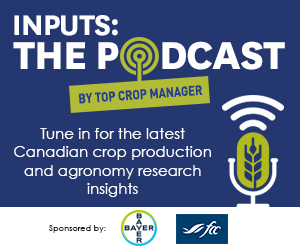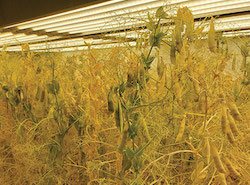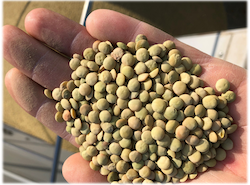| |
| |
 |
 |
| |
 |
|
@{mv_date_MMM d, yyyy}@ |
|
| |
 The facility will house Olds’ new bachelor of digital agriculture program.
» Read more...
The facility will house Olds’ new bachelor of digital agriculture program.
» Read more...
Corteva first collaborated with Symborg to deliver the Utrisha N and BlueN nutrient efficiency optimizer in 2021.
» Read more...
Plus, Manitoba growers are now contending with frost in some areas.
» Read more...
|
| |
 |
 |
| |
|
| |

Continuous corn has been possible the past couple decades thanks to Bt corn hybrids. But, as in many situations where there are limited options for control, the repeated use of Bt corn has allowed resistance to develop in corn rootworm populations.
Corn is used by many livestock farmers as feed due to its abundance and nutritional content. So, what can we do? In this episode of Inputs, Tracey Baute, OMAFRA field crop entomologist, discusses how Bt corn hybrids have worked to manage corn rootworm so far, how resistance has developed and what it means for corn growers going forward.
» Listen now... |
| |
|
| |
 With the growing demand for top-yielding field pea production with high protein content and other quality attributes, it’s important to understand the relationship between soil micronutrients and pea production. Concentrations of certain micronutrient elements, such as iron and zinc, are important to human health. However, the nature of soil micronutrient availability and interactions with field pea production and quality in Western Canada are not yet well understood. A team of USask researchers are examining the impact of micronutrient fertilization on grain yield and quality of two cultivars in a new three-year project.
» Learn more...
With the growing demand for top-yielding field pea production with high protein content and other quality attributes, it’s important to understand the relationship between soil micronutrients and pea production. Concentrations of certain micronutrient elements, such as iron and zinc, are important to human health. However, the nature of soil micronutrient availability and interactions with field pea production and quality in Western Canada are not yet well understood. A team of USask researchers are examining the impact of micronutrient fertilization on grain yield and quality of two cultivars in a new three-year project.
» Learn more... |
| |
 Variety selections have long been focused on yield and key agronomic traits. But plant breeders are also interested in using other tools to improve selection. The use of physiological breeding is one such tool that can complement conventional breeding by characterizing other agronomic traits that contribute to yield – such as root length and rooting depth. This allows breeders to choose crosses based on these other traits, rather than on yield alone.
» Learn more...
Variety selections have long been focused on yield and key agronomic traits. But plant breeders are also interested in using other tools to improve selection. The use of physiological breeding is one such tool that can complement conventional breeding by characterizing other agronomic traits that contribute to yield – such as root length and rooting depth. This allows breeders to choose crosses based on these other traits, rather than on yield alone.
» Learn more... |
| |
|
| |
|
|
| |
| |








